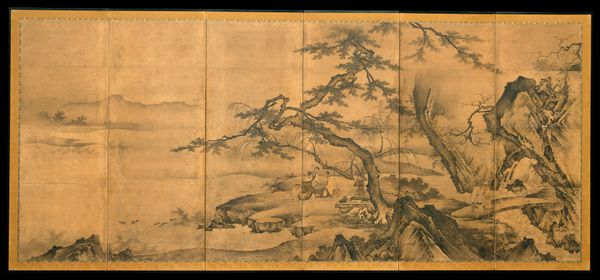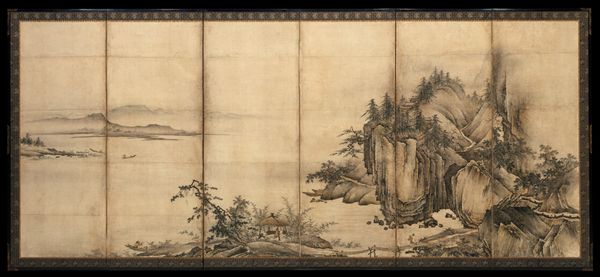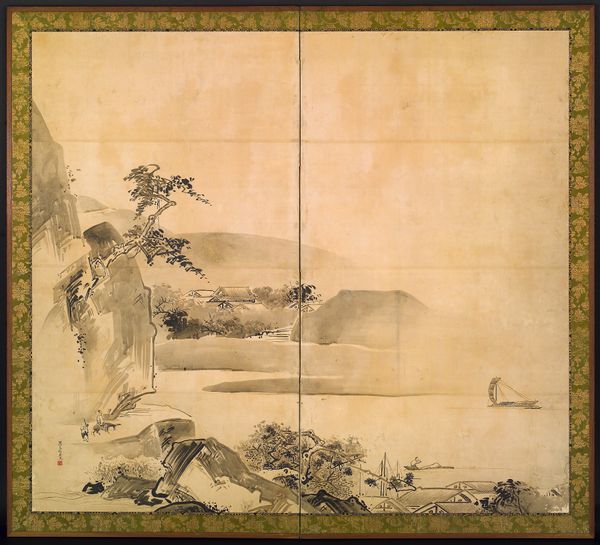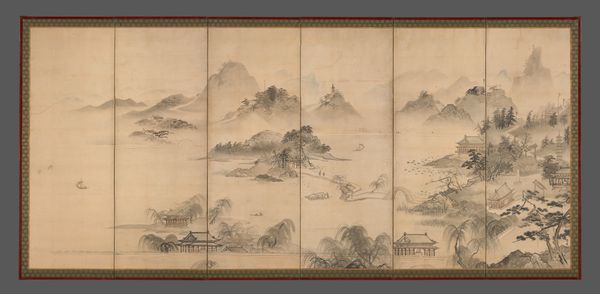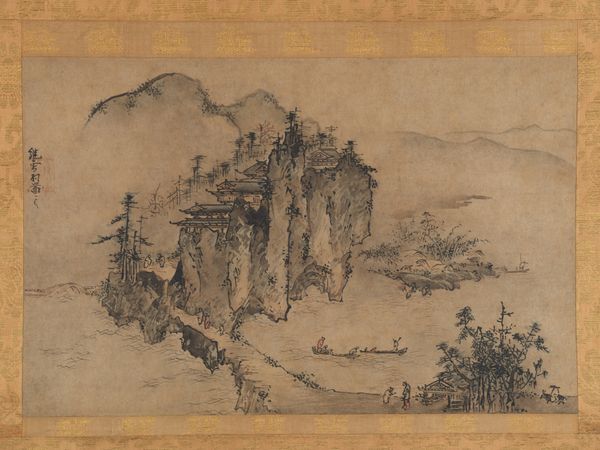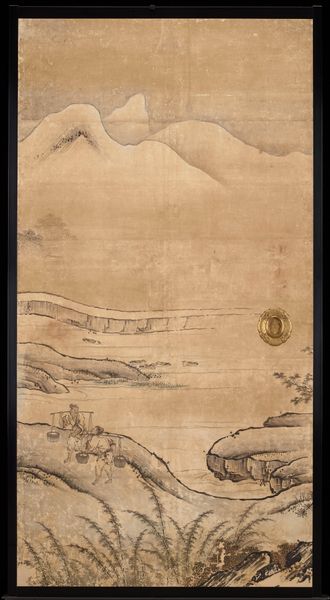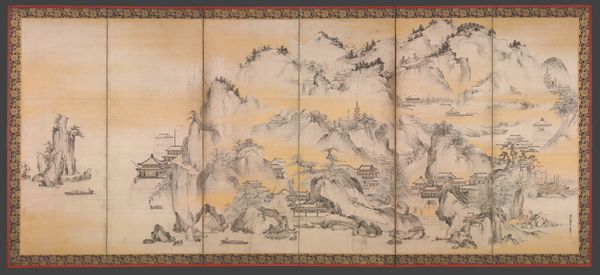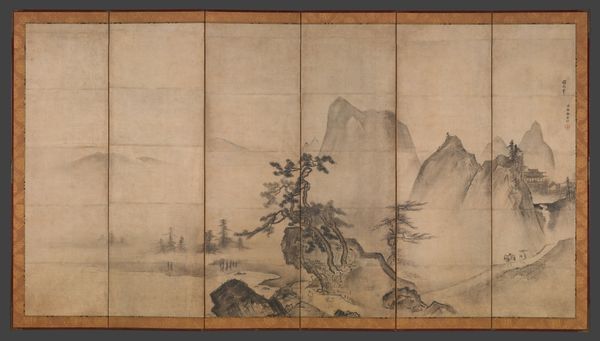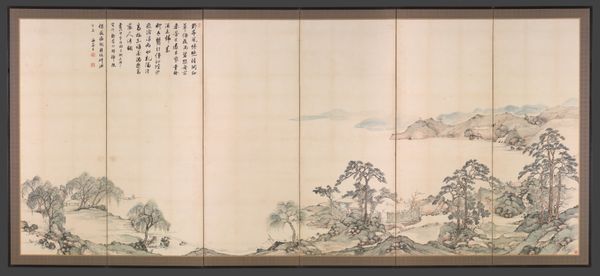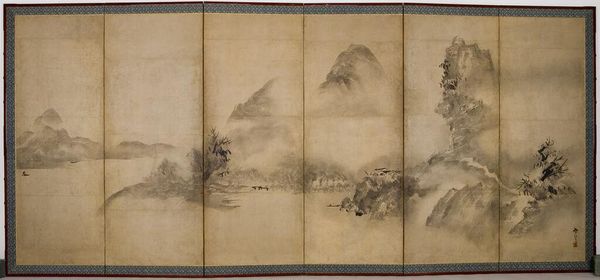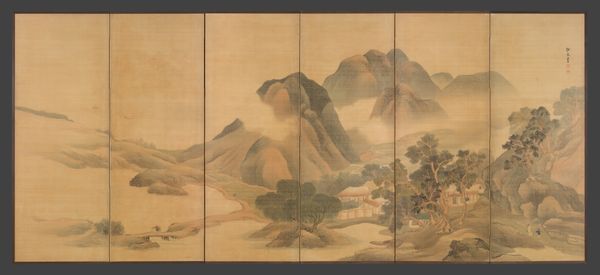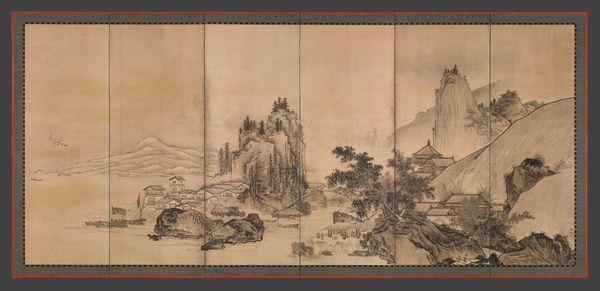
painting, watercolor, ink
#
water colours
#
painting
#
asian-art
#
landscape
#
japan
#
watercolor
#
ink
#
genre-painting
#
watercolor
#
yamato-e
Dimensions: 53 7/8 × 142 3/8 in. (136.84 × 361.63 cm) (image)59 3/8 × 148 1/2 × 3/4 in. (150.81 × 377.19 × 1.91 cm) (outer frame)
Copyright: Public Domain
Editor: We’re looking at "Four Accomplishments," a 17th-century Japanese painting attributed to Untaku Toetsu, made with ink and watercolors. It's a sprawling landscape filled with tiny figures. What strikes me is how the seemingly idyllic scenes probably depict highly formalized social interactions. How do you interpret this work? Curator: The phrase “Four Accomplishments” usually refers to playing the zither, playing Go, calligraphy and painting. This artwork speaks to the gendering of art itself. Think about who had access to leisure, education, and the ability to create art at this time. The ruling classes, typically men, were free to engage in activities valued by society, cementing their social position. Who does not have that privilege? Where are women? What are their roles? How do they interact? How do the painting techniques and chosen themes further express or reinforce these ideas about class and power? Editor: That's fascinating. I hadn’t considered it from the angle of social power. It feels like these scenes also highlight a sense of cultural and national identity that's deeply tied to the land and its history. How much do the landscapes in Japanese art serve as an expression of a very particular worldview? Curator: Precisely! Landscapes are never just passive backdrops. They are active sites where cultural narratives and power dynamics play out. This work uses the Yamato-e style, which translates to Japanese-style painting and showcases scenes unique to Japan, distinguishing them from Chinese influences. This constructed and idealized vision of Japan played a significant role in fostering a unique national identity and justifying hierarchies. Can we see it as a kind of "soft power?" Editor: It’s amazing how a seemingly straightforward genre scene can be so deeply enmeshed in identity and power dynamics. Curator: Indeed. By unpacking the painting’s historical and social contexts, we expose its implicit arguments about status and what it meant to be Japanese at this moment in history. Editor: I’ll never look at a landscape painting the same way again! Curator: Hopefully not! Considering such sociopolitical backdrops makes us engage critically with the power and purpose of art itself.
Comments
No comments
Be the first to comment and join the conversation on the ultimate creative platform.
